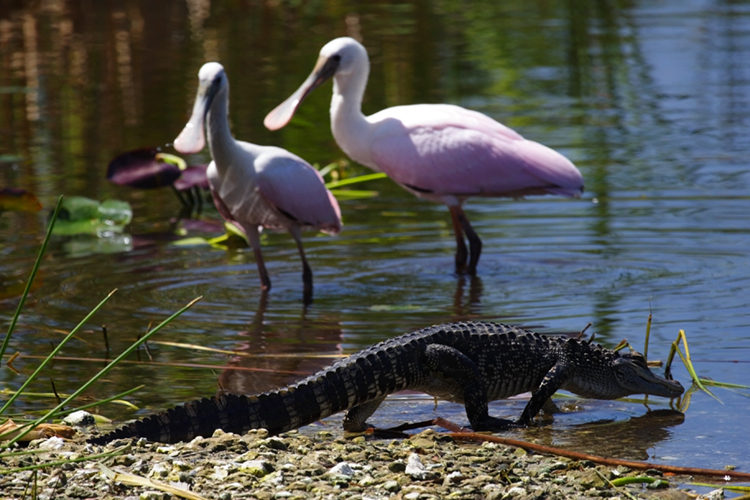Seventy years ago today, on Dec. 6, 1947, United States President Harry S. Truman officially opened southwestern Florida’s Everglades National Park. The park was established to conserve parts of the Everglades wetlands and the Big Cypress Swamp, as well as many coastal islands along the Gulf of Mexico. Covering 1,508,976 acres (610,661 hectares), the junglelike plant life of Everglades National Park includes saw grass, delicate orchids, lacy cypress trees, pines, palms, and thick tangles of mangrove trees. Crocodiles, alligators, manatees, and many other animal species live there.
In the late 1800’s and early 1900’s, land developers tried to drain parts of the Everglades wetlands, intending to turn the area into valuable real estate properties. Canals and levees diverted water from both the Everglades and nearby Lake Okeechobee, damaging the wetlands. Conservation efforts led to the creation of Royal Palm State Park in 1916, a protected area that steadily expanded and became the basis for Everglades National Park.

Further degradation of the Everglades—made worse by rising sea levels and heavy traffic on the park’s roads and waterways—sparked the Comprehensive Everglades Restoration Plan in 2000, a 35- to 50-year project meant to “restore, preserve, and protect the south Florida ecosystem while providing for other water-related needs of the region.”
Untitled Document
Can't view the linked articles? Subscribe to World Book Online

World Book Online delivers a progressive sequence of core databases supported by supplemental
tools, such as language translation, graphic organizers, and unique Webquests. Moving from
Early World of Learning to World Book Advanced, World Book Online aligns end-users with their
appropriate learning levels. Each stand-alone site provides additional features to support the
needs of users’ specific capabilities.
The World Book Difference
World Book combines cutting-edge technology with traditional editorial excellence to produce
authoritative, trustworthy, and unbiased content. The digital content is updated in real time and
carefully curated for each learning level. Accessible 24/7, the content is available on a variety of devices.
World Book Online combines 21st-century instructional techniques with timely information.
By breaking down complex topics and using easily understandable text, World Book Online helps to
build fluency and increase comprehension. Featuring single sign-on capability, these sites are paired
with highly visual content to engage even the most reluctant reader. Our collection of resources kindles
a lifelong learning experience for every user. This adherence to clarity, currency, and accuracy makes
World Book’s digital offerings an information hub for the classroom, library, and beyond.
Image 1: Everglades National Park is in the Florida Everglades, one of the few subtropical regions of the United States. The southern part of the park includes many red mangrove trees, whose spreading roots catch and hold soil. Credit: National Park Service
Image 2: Everglades National Park includes large areas of wetlands that provide a home for wildlife. In this picture, roseate spoonbills wade near a young alligator. Credit: © Shutterstock